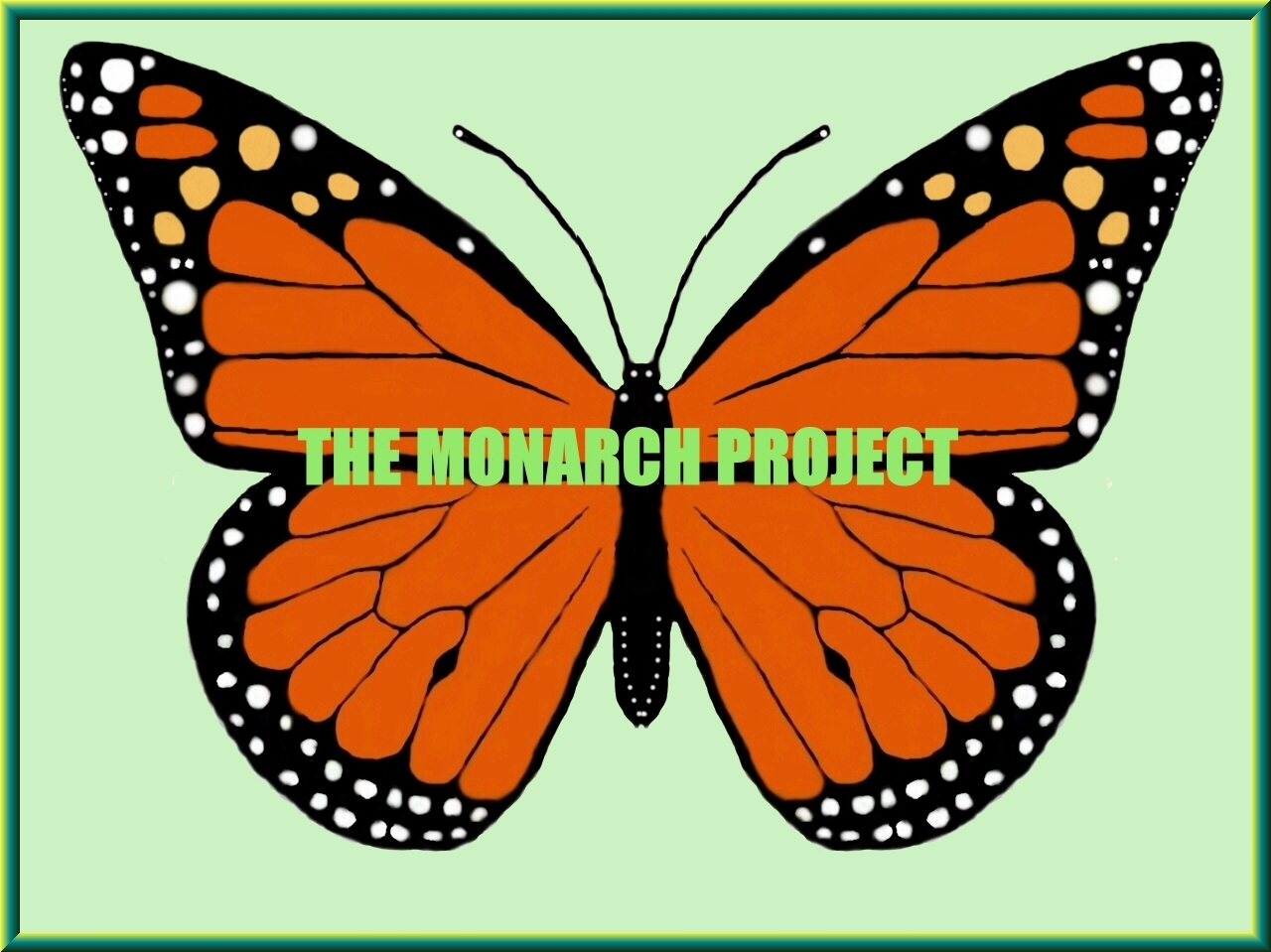|
The Monarch Butterfly Project 2013: Habitat Enrichment
About 15 years ago, we selected an area in the rear of our long, narrow yard, for a prairie restoration project. We spread seeds of various prairie plants, all collected in Ohio (for DNA integrity of our planting) and scattered the seed in an un-mowed area measuring about 1/8 acre.
Here are photos showing the history of "Goodwin's Prairie" and of our work in 2013.
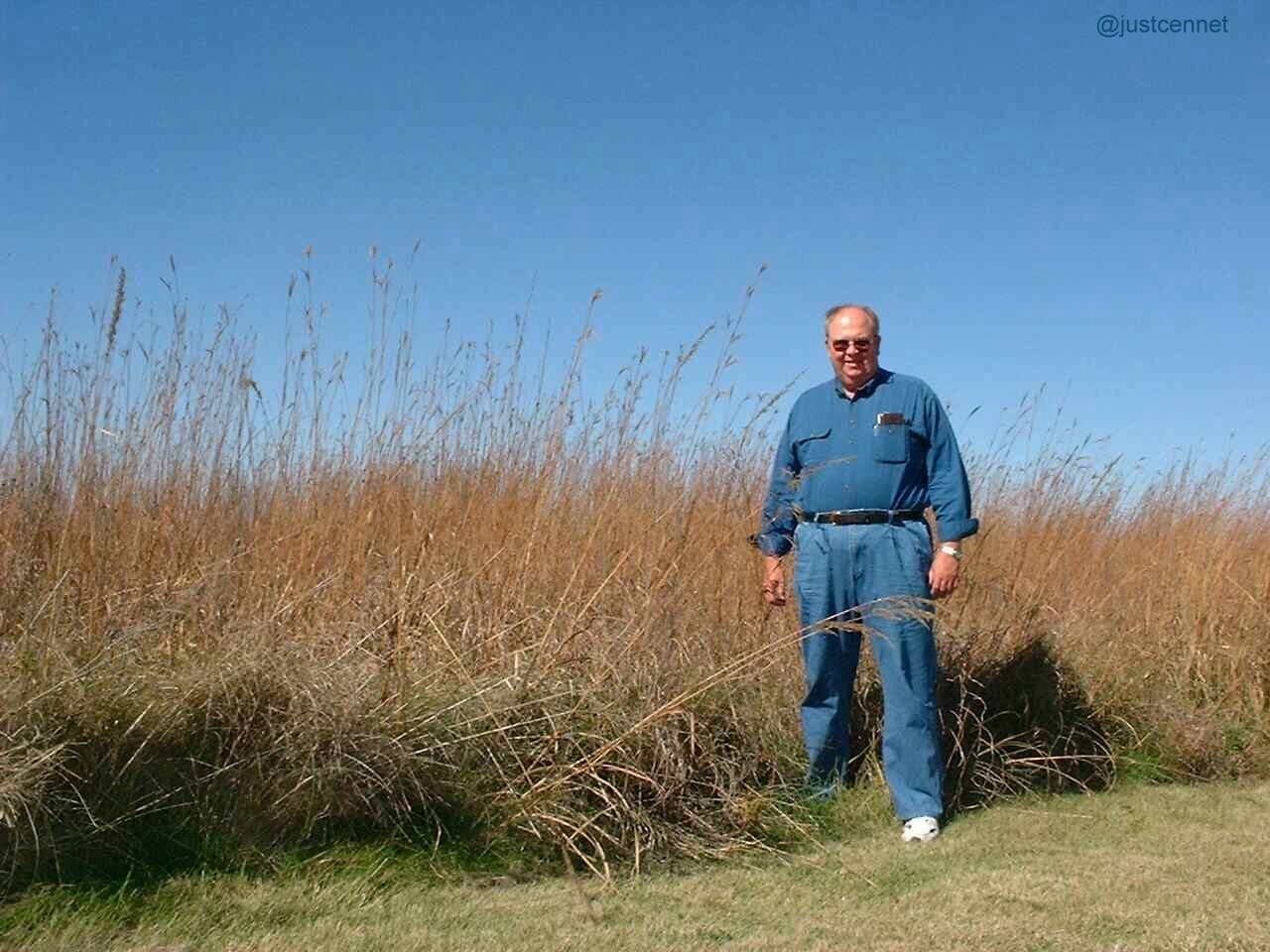 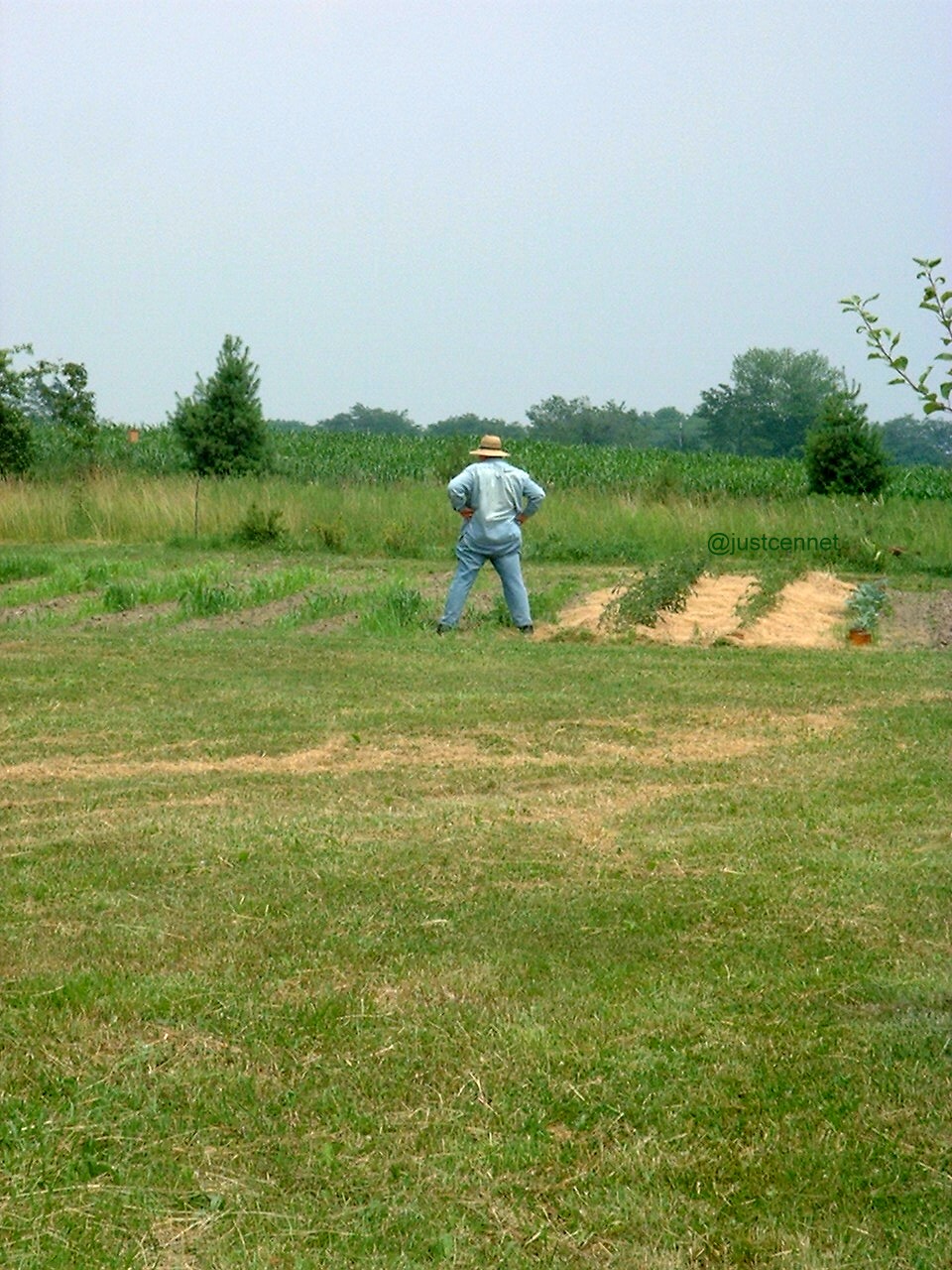
My husband Steve worked for the Ohio Department of Natural Resources for 30 years. Much of his work involved preservation of Ohio's prairies. For the first photo, he posed next to a planting of Big Bluestem Grass that we found on a roadside in Illinois. In the next photo, Steve is standing in our vegetable garden, looking at the progress of the prairie plants he had planted in our lawn behind the vegetables, around the turn of this century.
 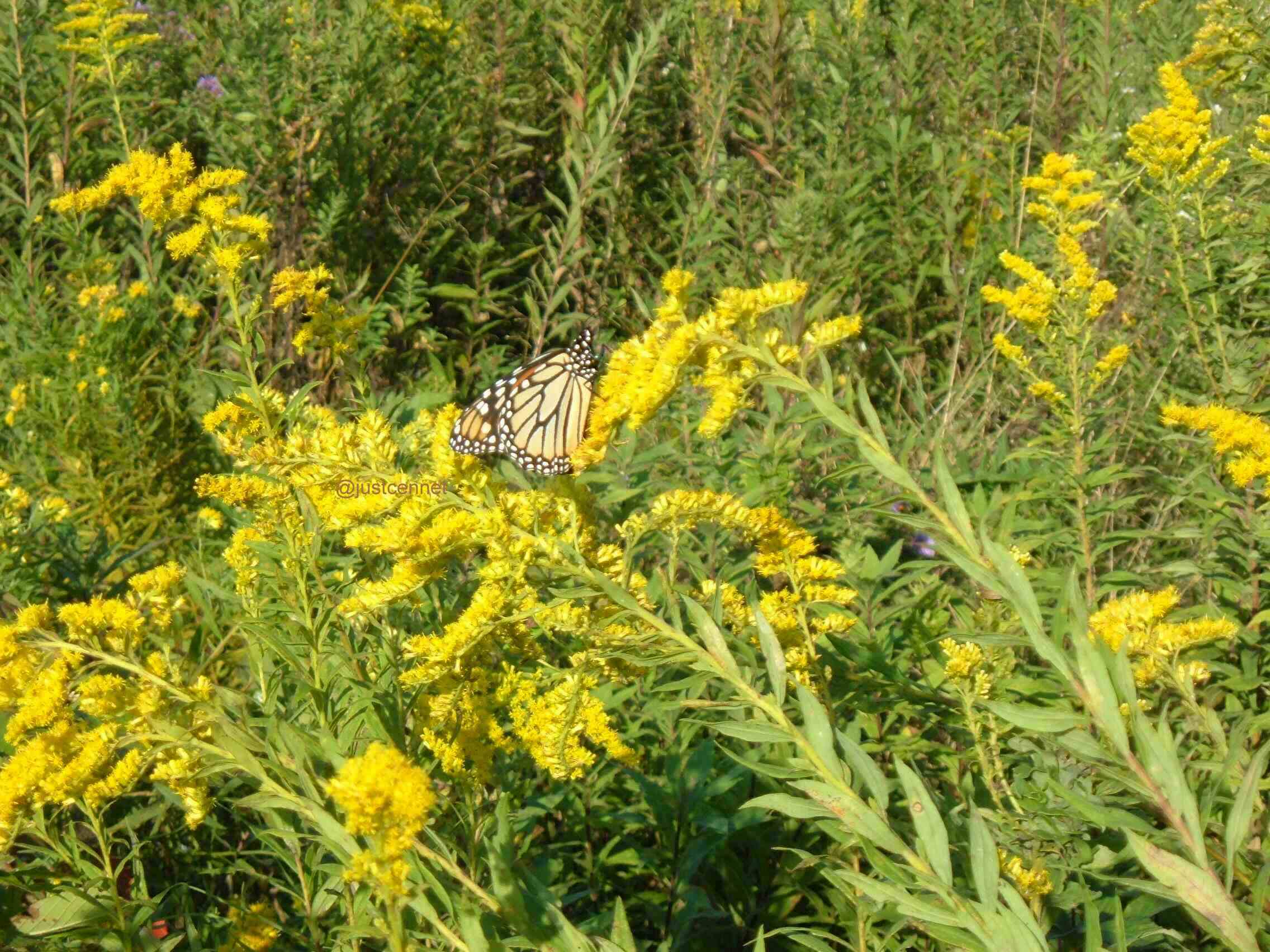 As our prairie began to grow, more and more wildlife and insects visited the area, and some began to call it home. Here is a Red Admiral butterfly, visiting Purple Coneflower. One of the early nectar plants that took immediate possession of the un-mowed prairie was Canada Goldenrod. It attracted Monarch Butterflies and other nectaring insects. As the prairie matured in later years, this species was gradually replaced with others that are more typical of a true prairie. As our prairie began to grow, more and more wildlife and insects visited the area, and some began to call it home. Here is a Red Admiral butterfly, visiting Purple Coneflower. One of the early nectar plants that took immediate possession of the un-mowed prairie was Canada Goldenrod. It attracted Monarch Butterflies and other nectaring insects. As the prairie matured in later years, this species was gradually replaced with others that are more typical of a true prairie.
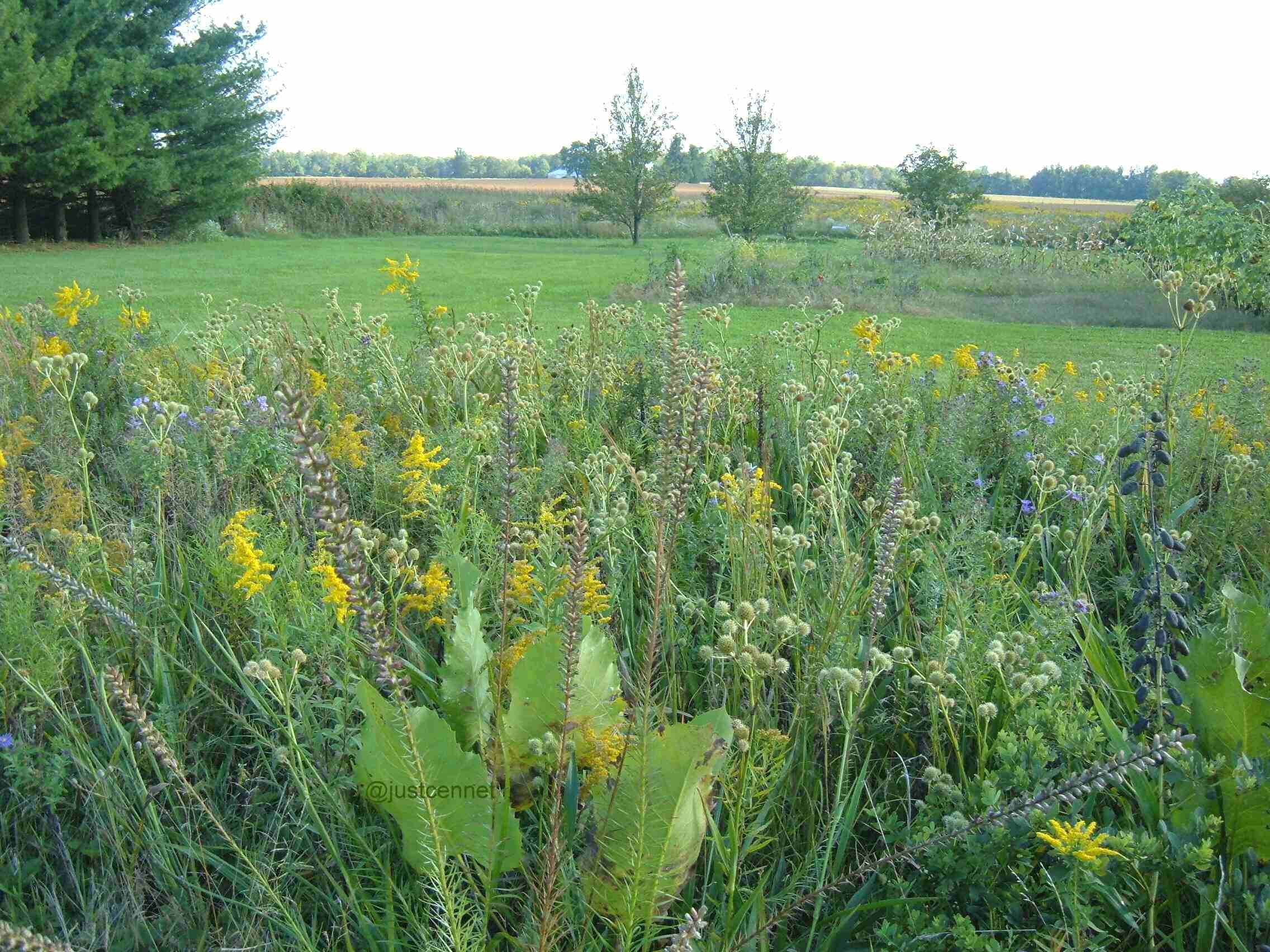 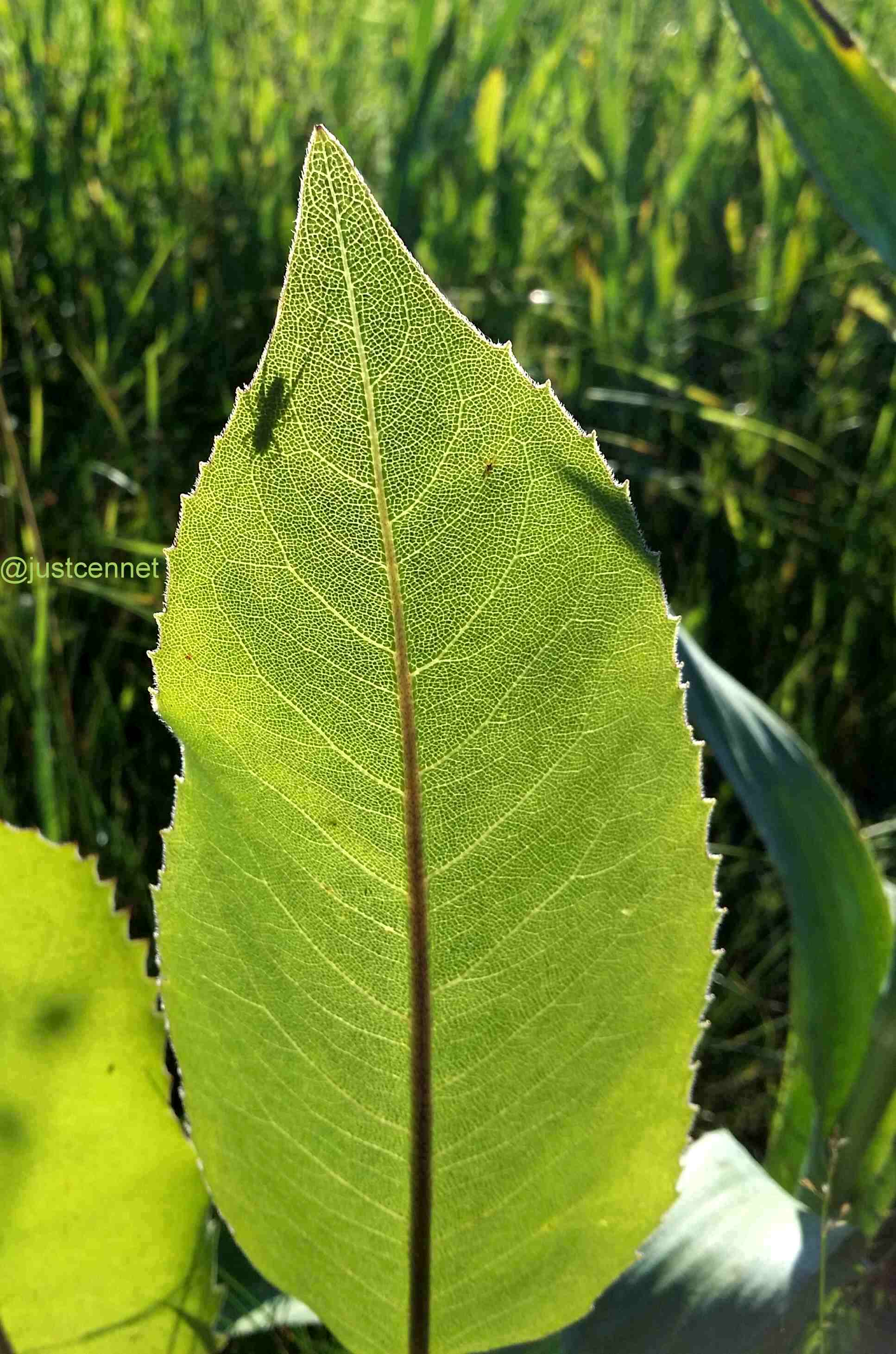 The early prairie looked like an oldfield, with some prairie plants scattered into it. But as time went on, certain species showed their likes and dislikes for our soil, micro-climate, and rainfall amounts. The large "tropical-looking" leaves of the Prairie Dock and their six to ten foot flower spikes, became our most majestic resident of the prairie community. Rattlesnake Master thrived in our clay soil. We began to see species of plants and animals that we had not previously seen on our property. The early prairie looked like an oldfield, with some prairie plants scattered into it. But as time went on, certain species showed their likes and dislikes for our soil, micro-climate, and rainfall amounts. The large "tropical-looking" leaves of the Prairie Dock and their six to ten foot flower spikes, became our most majestic resident of the prairie community. Rattlesnake Master thrived in our clay soil. We began to see species of plants and animals that we had not previously seen on our property.
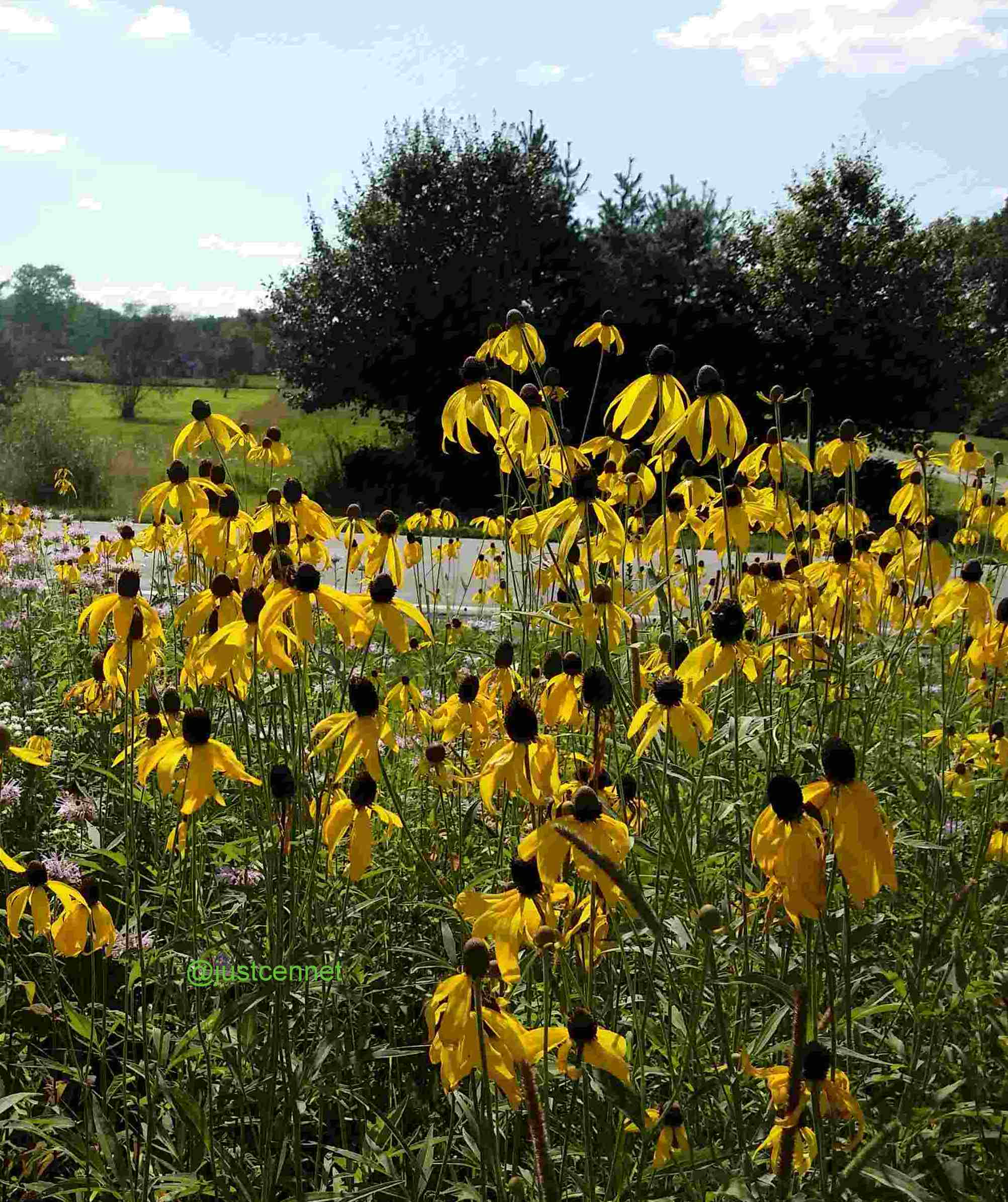 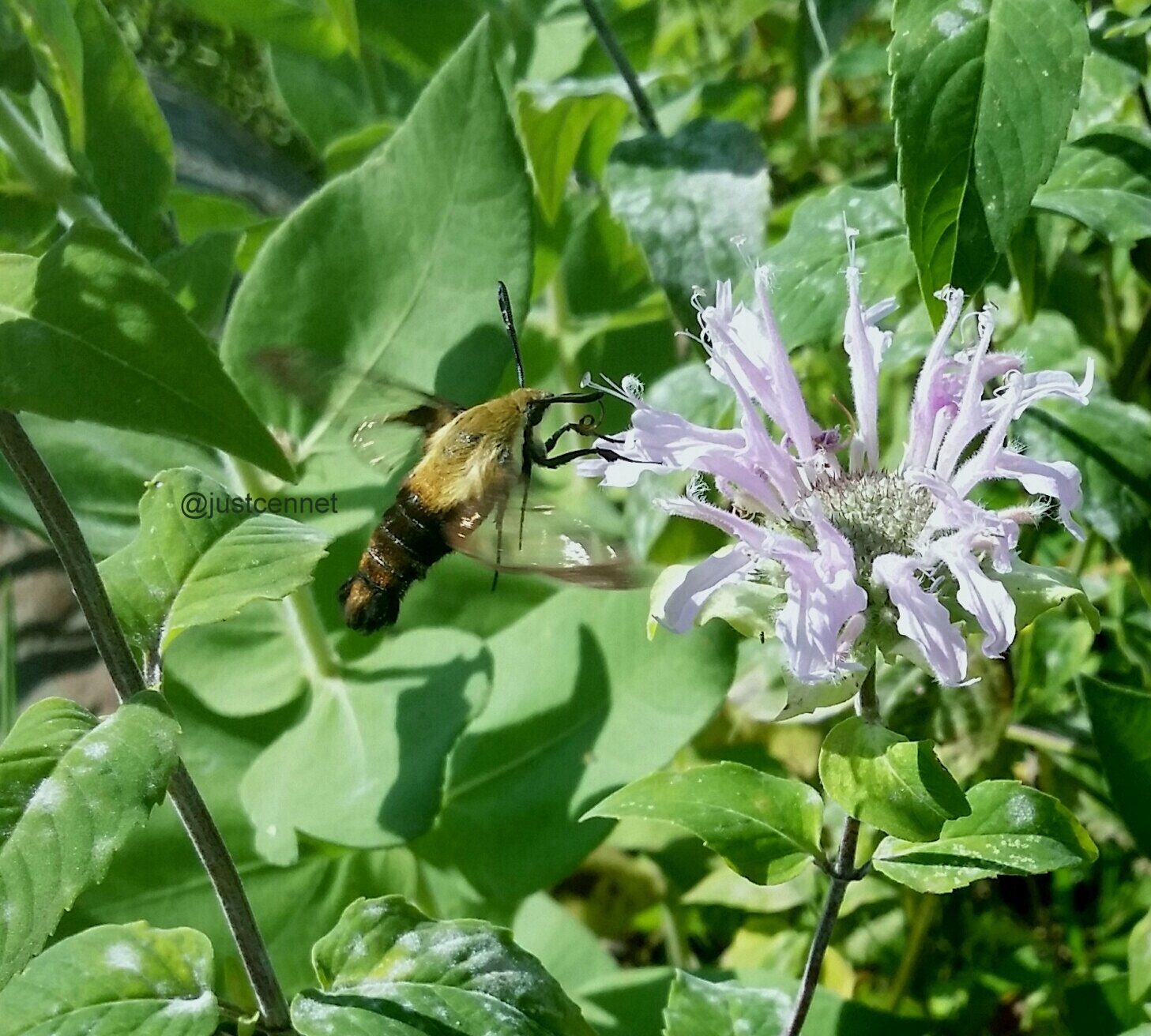 Not long after we planted our prairie behind the vegetable garden, we began to place the more showy prairie plants along our roadside ditch, too. This served a political purpose. People in our area are largely rural, having parents or grandparents that farm(ed). Their attitude towards prairie plants can be somewhat less than enthusiastic. A showy front prairie drew attention to the beauties of prairie communities, and helps eliminate complaints that we are growing "weeds". Yellow Coneflower and Wild Bergamot are two of our showy species. That's a Hummingbird Clearwing Moth, feeding on the Wild Bergamot. Not long after we planted our prairie behind the vegetable garden, we began to place the more showy prairie plants along our roadside ditch, too. This served a political purpose. People in our area are largely rural, having parents or grandparents that farm(ed). Their attitude towards prairie plants can be somewhat less than enthusiastic. A showy front prairie drew attention to the beauties of prairie communities, and helps eliminate complaints that we are growing "weeds". Yellow Coneflower and Wild Bergamot are two of our showy species. That's a Hummingbird Clearwing Moth, feeding on the Wild Bergamot.
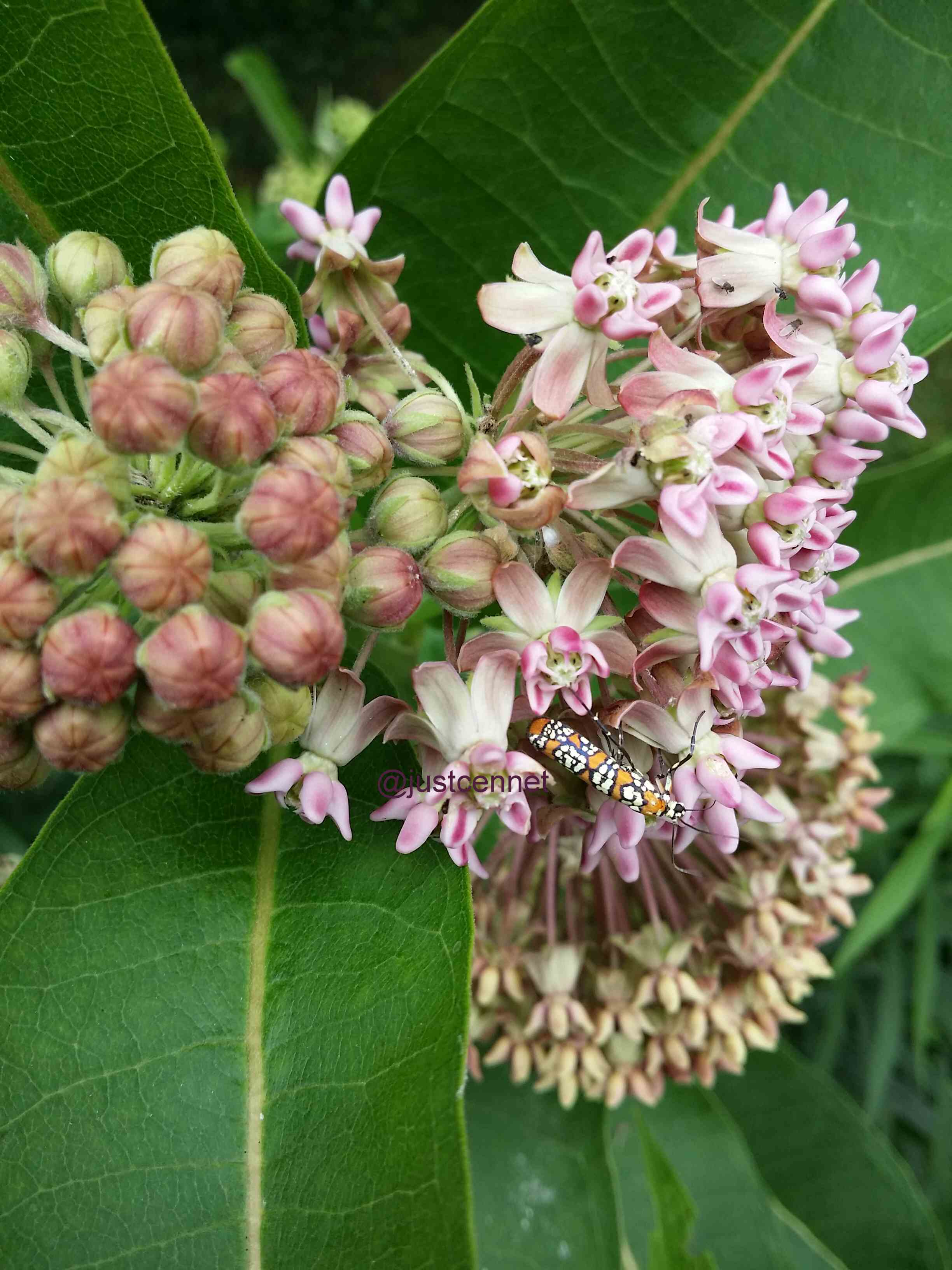 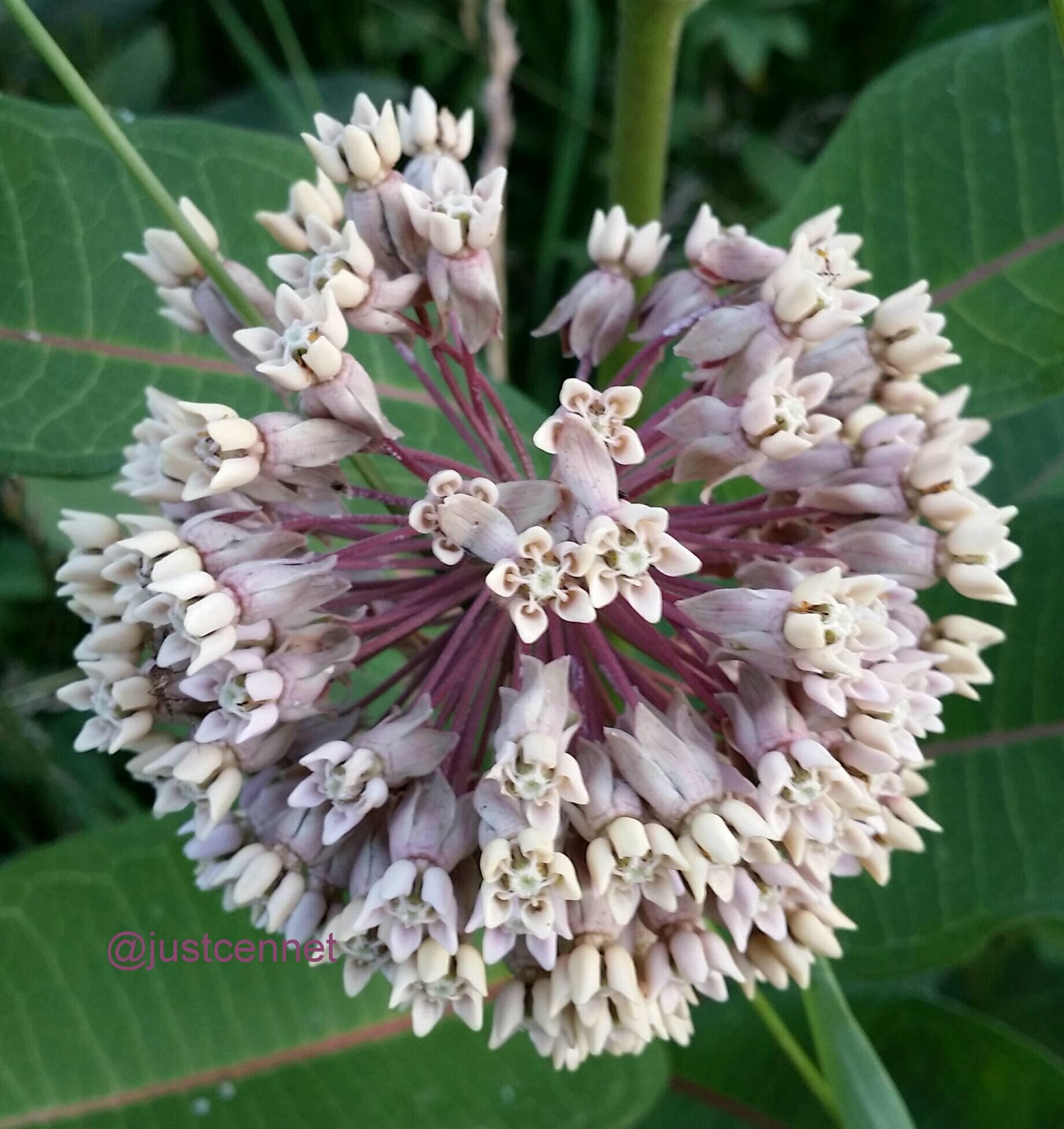 Of course, milkweed is sometimes a prairie plant, and we had two species. Common Milkweed (Asclepias syriaca) attracted pollinators to our front prairie strip, where it volunteered itself. We were gifted with some seeds for the rare Prairie Milkweed (Asclepias sullivantii), which we grew in an area near the house. Notice the main vein in the leaf is often pink. Neither species drew in many Monarchs in 2013. Of course, milkweed is sometimes a prairie plant, and we had two species. Common Milkweed (Asclepias syriaca) attracted pollinators to our front prairie strip, where it volunteered itself. We were gifted with some seeds for the rare Prairie Milkweed (Asclepias sullivantii), which we grew in an area near the house. Notice the main vein in the leaf is often pink. Neither species drew in many Monarchs in 2013.
NEXTpage in the Monarch Project.
BACK
to www.turkishangoracats.com

Email: "justcennet"
|
